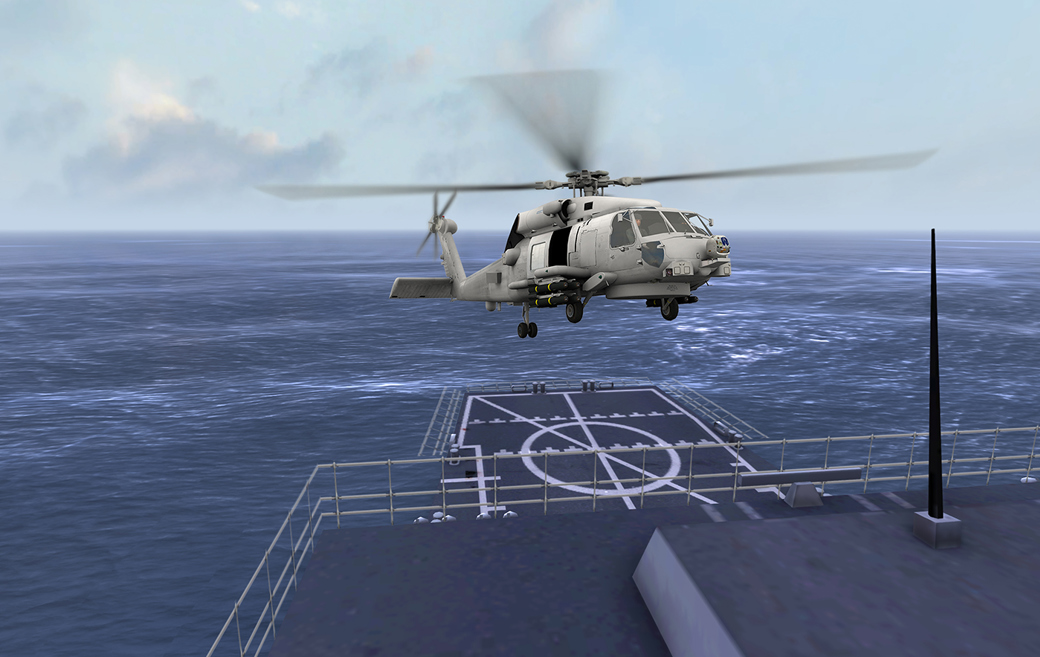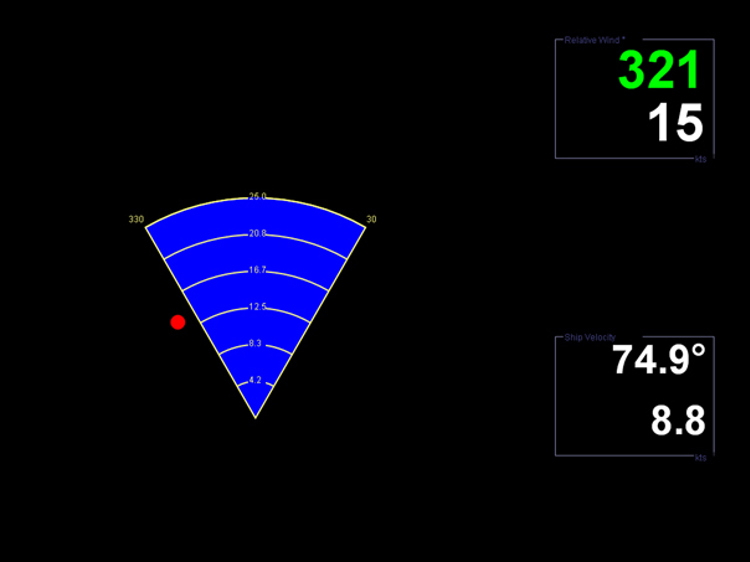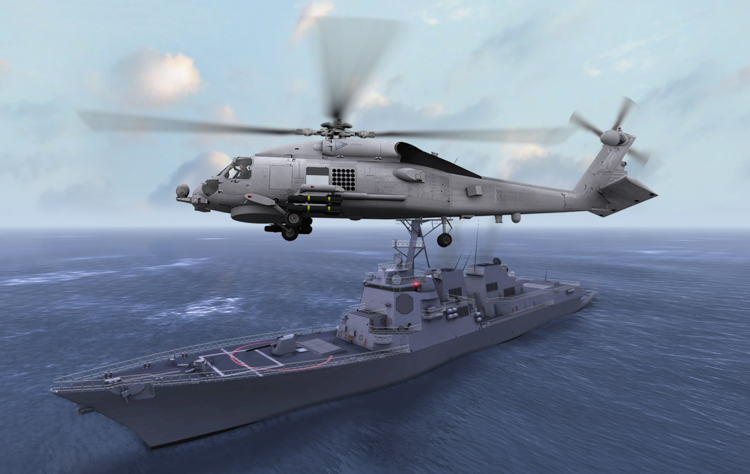
PROTEUS Helicopter Control Officer (HCO) Procedural Trainer
The HCO provides the vital link between the aircrew, the Landing Signals Officer (LSO) and the bridge during flying operations.
The PROTEUS HCO Trainer provides flying operations training including monitoring launch and recovery, VERTREP (Vertical Replenishment), and HIFR (Helicopter In-Flight Refuelling). The trainer includes a generic or emulated SHOLDS (Ship Helicopter Operational Limits Display System) that depicts the relative wind and ship’s motion.
If SHOLDS showed conditions to be outside limits, the HCO could calculate and recommend an alternative course and speed to bring the ship’s motion and relative wind over the deck within launch or recovery limits. The instructor is provided with controls to ‘fly’ the helicopter as directed by the HCO
The PROTEUS HCO Procedural Trainer can be linked to the PROTEUS ASTT, Surface Ship CTT or any HLA-compliant simulator.
Helicopter operations
Helicopters are an essential asset in naval operations and operating them safely requires both the aircrew and ship’s personnel to be well trained.
Aircrew mostly learns their flying skills on dedicated flight simulators. However, on board ship, there are a number of personnel who also require specialist training for helicopter operations. On most naval vessels, the Helicopter Control Officer (HCO) provides the safety link between the aircrew; the Flight Deck Officer or Flight Deck Controller; the bridge; and the CIC. For example, an untethered helicopter with rotors running on the deck is very vulnerable should the ship manoeuvre unexpectedly. The presence of a well-trained HCO could alert the bridge to avoid such an incident. The HCO would be aware that in such circumstances a turn could cause the helicopter to quickly go out of control due to the gyroscopic effect of the main rotor, with potentially disastrous results for personnel on deck, the aircrew, the helicopter and the ship. Should wind conditions over the helicopter deck be outside safe operating limits, an accident could result. The HCO would alert the bridge to the prevailing conditions and calculate and recommend a course and speed to bring the ship’s motion and relative wind over the deck to within safe operating limits. Thus the HCO provides the vital safety link for operations, but to be effective, the HCO must be well trained.
Essential skills for an HCO include:
Good communication skills, whether by hand signals or radio with the aircrew or by intercom with the FDO or FDC, the bridge and the CIC.
Monitoring helicopter operations to identify potentially dangerous situations and, should a problem be detected, communicating the safe course of action to the correct personnel.
The Proteus HCO Procedural Trainer provides a realistic training environment, including an emulated SHOLDS (Ship Helicopter Operational Limits Display System), to ensure safe helicopter operations from any ship.


Features
- Proven in operational training - provides low-risk, cost-effective training solution
- Can be tailored to meet each user’s specific training requirements
- Runs on COTS PCs
- HLA evolved compliant (IEEE1516.2010)
- Can be federated with any other PROTEUS training system, or:
- Kongsberg Maritime’s K-Sim. Navigation training systems
- Third party trainers using either an HLA or DIS interface
- A long-term follow-on support contract available